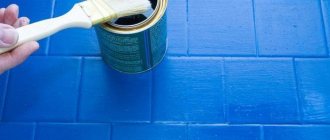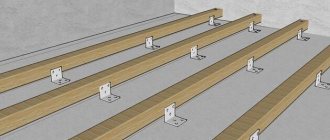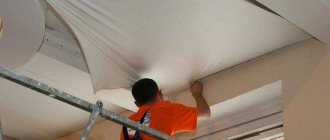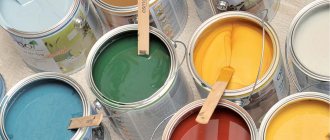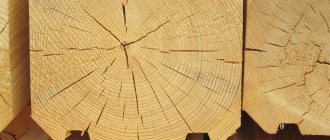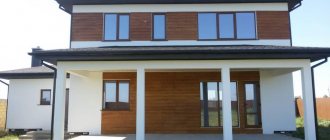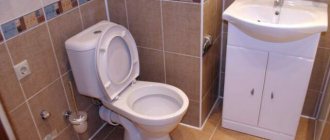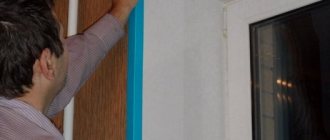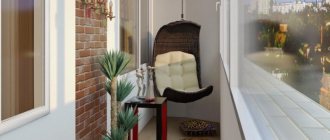A painted wooden floor is not a relic of the past or a sign of bad taste. A competent approach to the design of this part of the interior helps to create a special atmosphere of comfort, coziness and give the room its own individual style. In addition to its decorative function, paint performs the task of protecting natural materials from internal and external factors. To make the right decision on how to paint a wooden floor in your dacha, you need to study the criteria for choosing materials and methods of applying it.
Why should you paint a wooden floor?
Using floorboards is a traditional way of finishing cottages and country houses. The material has an attractive appearance, pleasant tactile sensations and low thermal conductivity. But wood has a porous structure, absorbs moisture, and the raw material is susceptible to the influence of pathological microorganisms, rodents and insects. In the absence of proper processing, the material begins to rot and turn into dust.
Painting a wooden floor performs the following tasks:
- creating a sealed barrier against dampness on the surface of the coating;
- impregnation of raw materials with substances that prevent the development of mold and mildew, repelling insects and small animals;
- makes it easier to clean the room - the painted floor is easy to sweep and wash;
- creating a hard crust that protects soft material from mechanical damage;
- creating a beautiful and unique interior.
Safety precautions
Almost all work associated with painting floors with any dyes is flammable and toxic. Smoking in areas where paint and varnish work is carried out can lead to death.
When painting the floor, do not forget to ventilate the room
All rooms should be well ventilated during painting. Workers must wear respirators and safety glasses. The painted floor is dried for a long time until the fumes completely disappear.
The main types of materials for painting floors
When deciding how to properly paint a wooden floor, you have to choose from two types of finishing materials:
- Colored compositions. The products are applied in several layers, after drying, forming a dense and hard crust. Part of the substance is absorbed into the wood, strengthening and protecting it from external influences. Paints for wooden floors are oil-based, alkyd-based and acrylic-based. Modern technologies have made it possible to create durable rubber, perchlorovinyl and polyurethane compounds.
- Transparent compounds. This category includes varnishes that leave the surface of the wood visible, while simultaneously emphasizing the beauty and texture of the material. Painting a wooden floor with varnish in combination with similarly finished walls and ceilings allows you to decorate a room in an antique or country style, which is popular with residents of big cities.
Paint or varnish - which is better for wood?
When deciding on the choice of floor finishing product, you need to take into account all the advantages and disadvantages of each type of material.
Color compositions have a rich palette; they can be mixed to obtain the desired shade. If desired, ornaments, patterns and paintings are created. The products are resistant to moisture, temperature changes, organic and chemical compounds. If you paint the wooden floor on an open balcony with polyurethane paint, you can expect that such a coating will last for decades.
Varnishes highlight the texture of wood, but are more difficult to apply. In addition, transparent products can only be applied to a well-polished surface. When exposed to low temperatures, the varnish coating cracks and peels off from the base.
Floor treatment compounds
Varnishes and paints are not the only means that can be used to decorate flooring in a beautiful, practical and original way.
The following substances can be used for this purpose:
- Oil mastic. It has a deep penetrating effect, protects wood from dampness, masks cracks and scratches. After applying mastic, the wood texture looks interesting and rich.
- Wax composition. The natural substance forms a thick film on the surface, creating a pleasant shine and protecting the base from moisture. The disadvantage is the need to periodically update the layer and rub it until gloss appears.
- Polymer products. Manufactured from polyurethane and rubber. They form a dense coating that is resistant to external factors and has a long service life.
Compatibility of paints and varnishes
When choosing a material for finishing deck and natural boards, you need to take into account the following nuances:
- Acrylic floor paints apply to any type of material, regardless of its chemical composition and water-repellent properties. The compositions do not lead to any reactions upon contact with the base.
- Alkyd compositions can be applied to a surface coated with a similar composition, as well as bases treated with a special primer, drying oil and oil solutions. Do not mix alkyd products with acetone group solvents.
- Polyurethane substances can only be mixed with each other, and should be applied to a base that has been cleared of previously used compounds, since they dissolve under the influence of polyurethane.
The combination possibilities and the procedure for preparing the base are indicated on the product packaging.
Which varnish to choose
Water-based and synthetic-based liquid products are available for sale.
Water-based varnish contains plasticizers that create a protective film. The product is easily applied to the surface, the work is not accompanied by a sharp and unpleasant odor. Water products are used in heated rooms; negative temperatures cause clouding and cracking of the coating.
For rooms where heating does not work in winter, synthetic-based varnishes are chosen for outdoor use. The products form a beautiful shiny layer that protects the material from moisture. The disadvantage of this solution is the high price of the material.
Which paint to choose
When deciding which paint is best to paint natural wood, you need to focus on the following criteria:
- environmental safety, absence of harmful additives;
- the color of the floor, which should match the interior of the room;
- surface texture (matte or glossy);
- waterproof;
- wear resistance;
- drying time;
- UV resistance;
- Can be cleaned with household detergents.
You should not choose the material with the lowest price. Floor painting is carried out based on subsequent repairs after 10 years or more. Inexpensive formulations do not have a complete list of performance characteristics.
Coating compatibility
Rarely does anyone think about compatibility when choosing varnish for a parquet floor or paint for unheated rooms. However, the compatibility of the paint and varnish material and the surface for its application is one of the rules for high-quality painting.
So, compatibility:
- Acrylic paint fits well on all previous coatings.
- Alkyd does not “conflict” with oil, so the first can be applied over the second.
- Polyurethane - give excellent results only in combination with each other.
As a rule, the manufacturer specifies such nuances on the packaging, so take a closer look at the description. You will spend a little more time choosing floor paint, but the excellent results are definitely worth it!
Colorful palette - what to choose
The range of paints and varnishes presented in the retail chain is distinguished by an almost unlimited range of color solutions. It is difficult for an unprepared buyer to navigate the palette of wood finishing products.
When deciding what color to paint the floor, you can focus on the classic options, which include the following colors:
- brown;
- beige;
- green;
- blue;
- orange.
If you deviate from the standards, then the following solutions will look unusual and original:
- black;
- white;
- yellow;
- red.
If the room consists of several zones, then they can be distinguished by using two types of coating with different colors.
Dispersion acrylic paint
Water-based acrylic paint belongs to the category of environmentally friendly finishing materials for interior use.
The advantages of the material are as follows:
- ease of application;
- color saturation;
- hydrophobicity;
- resistance to abrasion, ultraviolet radiation and detergents;
- affordable price.
This type of coating protects wood from dampness and prevents the formation of mold and mildew.
Oil base
Oil paint is a classic in painting. The inexpensive material has a wide range of applications for both interior and exterior work. After drying, it forms a durable shiny coating that protects the base from moisture and ultraviolet radiation. Oil-based products have more disadvantages than advantages.
These include:
- unpleasant odor;
- long drying time;
- cracks appear due to drying out.
Today this material is practically not used, because it has a short service life.
Wear-resistant paint
Wear-resistant paint for wooden floors is made on the basis of acrylic or polyurethane. These substances permeate the base throughout the entire volume, ensuring its resistance to dampness, fungus and insects.
The polymer coating retains its shape and does not deform under the influence of temperature changes and moisture. The surface film is highly durable.
The color of the coating does not fade under the influence of detergents, abrasion and solar radiation. It easily removes shoe marks, grease stains and other contaminants. Wear-resistant compounds are also used for painting open structures: verandas, terraces, gazebos.
Rubber compound
Rubber floor paint is used to treat high traffic areas, such as living rooms, corridors and verandas. Water-based formulations are made with the addition of polymer additives, which give the product high performance characteristics. After application, the paint forms a dense matte film on the base.
The material has the following advantages:
- elasticity;
- environmental Safety;
- chemical and biological inertness;
- waterproof;
- abrasion resistance;
- no odor;
- durability.
The coating is non-slip and has a deep and rich color.
Enamel alkyd paints
They have a base of a mixture of fatty acids and film-forming alkyd resins. Available in glossy, matte, semi-matte variations in a wide range of shades and effects (metallic, shimmer, sparkle). They have good hiding power and adhesion to wooden floors.
Other benefits:
- thixotropy for precise application;
- residual elasticity;
- resistance to cracking, ultraviolet radiation, moisture, household chemicals;
- ease of care;
- minimal shrinkage;
- durability (up to 6-10 years);
- moderate drying time (up to 24 hours).
Alkyd paint is wear-resistant to abrasion and mechanical stress. Does not require serious preparation of wooden surfaces (cleaning and degreasing are sufficient). Combines protective and decorative properties. Can be used indoors and outdoors.
Significant disadvantages are a strong unpleasant odor with a long weathering period, low vapor permeability, toxicity during the application and drying stages.
The order of preparatory work before painting
The quality of painting depends not so much on the chosen material, but on the correct preparation of the base and application of the material.
Depending on the repair conditions, the preparatory work algorithm may be as follows:
- Drawing up a sketch. Choice of color and pattern.
- Perform calculations. Determining the amount of necessary materials, fixtures and tools.
- Purchasing everything needed for repairs.
- Cleaning the floor from old finishes (if this technology is chosen).
- Leveling the surface. Seal large holes and cracks.
- Applying a primer (only on cleaned wood).
- Application of paint and varnish material to the surface.
At the end of the work, it is advisable to wipe the coating with a soapy solution and vinegar to remove any remaining oil from the surface.
What tools will you need?
Before starting work, you need to prepare everything you need so as not to be distracted during the repair process.
The following tools and materials will be required:
- Roller with telescopic handle. Depending on the chosen composition, a foam or fur nozzle is used.
- Brush. You can’t do without it when processing baseboards and internal corners.
- Paint brush with natural bristles. Used for painting bases with a textured surface.
- Putty knife. Necessary for removing old coating, sagging and filling irregularities.
- Paint bath. Needed to load paint regardless of whether a roller or brush is used.
- Masking tape for protecting walls and trim, drawing demarcation lines.
- Solvents for diluting thick liquids, removing splashes from walls, clothing and hands.
- Rubber gloves and assembly glasses.
To apply alkyd compounds, you can use a spray gun.
Treating floors with a primer before painting
If the old paint has become unusable, then there is no point in wasting time and effort on leveling it.
You can remove the old coating in the following ways:
- spatula;
- plane;
- grinding machine;
- blowtorch;
- factory-made remover.
After cleaning, the base must be leveled. The protruding parts are ground down with sandpaper by hand or with a belt machine. Then you need to putty the cracks, holes, chips, cracks and other surface defects. This is done with a wood compound and a spatula. It is advisable to use a solution whose color is the same as the base. After drying, the grout must be sanded and polished. Then the surface is cleaned of crumbs and dust.
The floor to be painted must be treated with a primer to clog the pores in it and strengthen the top layer. This will increase surface adhesion, facilitate application and reduce material consumption. The primer can be applied with a brush or roller. After the first layer has dried, the procedure should be repeated.
What tools will you need?
In most cases, no complicated tools will be needed.
You need to worry about protective equipment - a respirator, gloves, goggles.
You should also purchase several brushes of different sizes and a roller with a long handle, preferably a telescopic one, since it is easier to adapt to the required parameters.
Small brushes are needed to make it convenient to paint corners and baseboards. In addition, you will need a bath. If painting with an oil composition, prepare a solvent in a separate container. For alkyd paint, it is advisable to use a sprayer.
To cover areas of the surface that do not need to be painted, use masking tape.
Painting wooden floors
First of all, you need to cover the walls and trim with masking tape. If you plan to use two different colors, then a dividing line is glued.
Then the material is prepared. The mixture is thoroughly mixed, if necessary, pigments and accelerators are added to it. Then the prepared solution is added to the paint bath. It should be remembered that quick-drying wood paint is covered with a film in a matter of minutes. You need to pour it into the container in small quantities, immediately after that tightly closing the jar.
First, baseboards and internal corners are processed. The floor is partially captured if further work is carried out with a roller.
The mixture should be applied starting from one of the corners opposite the front door. The board is painted along the grain of the wood. The mixture is evenly distributed over the surface until the roller or brush is completely dry. This will avoid the appearance of drops and sagging.
After the first layer has completely dried, the procedure is repeated. The second layer will not only create a more durable coating, but also eliminate the influence of the base background on the paint color.
Aftercare
Proper painting of a wooden floor is not the only thing that home or apartment owners should know. You should also remember the rules for caring for new coating. In fact, subsequent care is very simple: you need to periodically carry out dry cleaning with a vacuum cleaner or wet cleaning with a wet brush and rag. Regular cleaning will keep the floor surface in perfect condition.
Proper care of wooden floors
The procedure for restoring a wooden floor is also quite simple. Only periodically the surface needs to be processed with a grinding machine, creating a perfectly even and smooth coating. But if we look at the restoration process from a financial point of view, it will be much easier and cheaper to apply a new coat of paint than to use a sander to restore it.
Secrets of proper wood floor care
Prices for acrylic paints for wood
acrylic paint for wood
Self-coloring mistakes
Beginner home craftsmen make the following mistakes when painting wooden flooring:
- do not pre-level the base;
- mix each new portion of different colors in the tray;
- do not prime the wood;
- they forget to cover the walls, trim and radiators with masking tape;
- use low quality brushes;
- cover the floor with one layer of paint;
- combine materials of different composition;
- work indoors without ventilation.
To avoid such mistakes, you need to carefully study the instructions for using paints and varnishes.
Surface drying
After the last coat of paint has been applied, you need to wait some time for it to dry. The optimal temperature for drying is considered to be +20-22°C, so it is recommended to paint a wooden floor in the warm season. Even if the paint is completely dry, it is advisable to avoid any mechanical stress on the floor surface at first. Only after 3-4 days from the moment of painting is it possible to fully use the floor.
Drying a wooden floor
There are several factors that affect drying speed, such as the level of humidity in the room, the quality of the paint purchased and its chemical composition. All this must be taken into account to give the paint enough time to dry. This is the only way the finished coating will achieve maximum wear resistance.
How long does it take for a wooden floor to dry?
Vinyl tiles
Vinyl tiles are a new, attractive material that should, in theory, combine the advantages of conventional ceramic tiles and linoleum. But in theory, as many say, it’s just linoleum, cut into pieces “to resemble a laminate.”
advantages of vinyl tiles:
- durability
- good design
- easy DIY installation
- wear resistance
- large selection of designs
- no maintenance required
disadvantages of vinyl tiles:
- unpleasant to the touch
- not environmentally friendly
- afraid of the sun
- afraid of large masses
- requirement for a level base
- susceptibility to piercing injuries
Ceramic tile
The classic covering in kitchens and bathrooms of apartments in some frame houses is used as a floor covering for the entire house. But this is rare; for the most part, kitchens and bathrooms are also covered with tiles.
advantages of ceramic tiles:
- environmental friendliness
- do-it-yourself installation is real
- Full water resistance
- pleasant to the touch
- strength
- wear resistance
- fire resistance
- variety in design
disadvantages of ceramic tiles:
- It's cold to walk if there is no heated floor
- fragility (can be broken by a fallen heavy object)
- price
- low sound insulation

